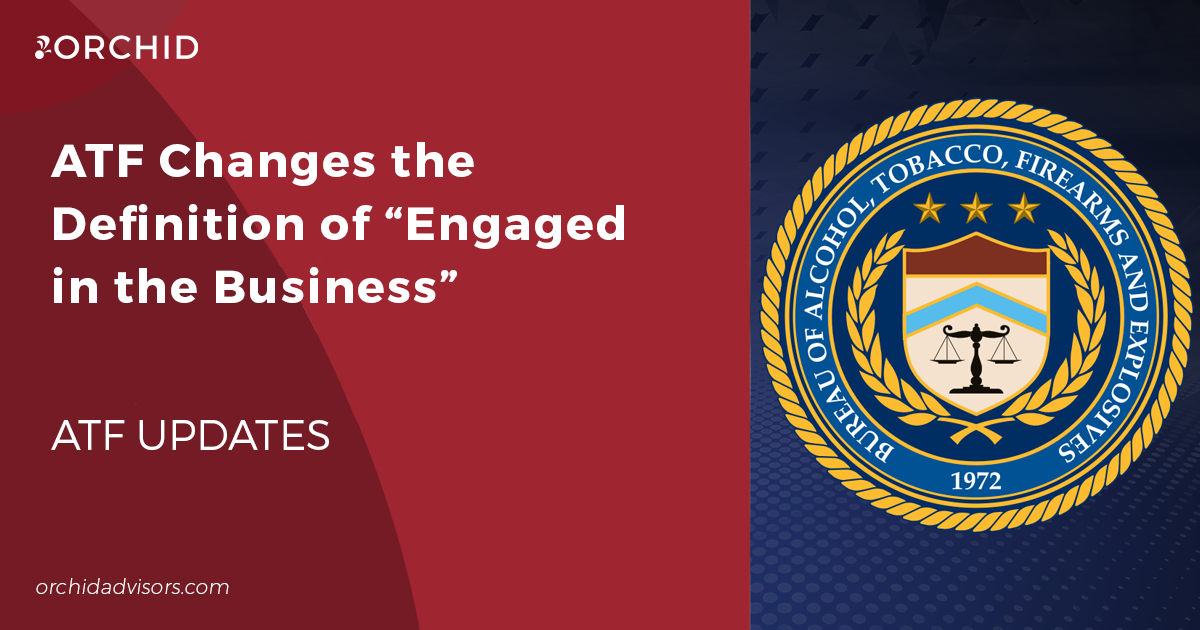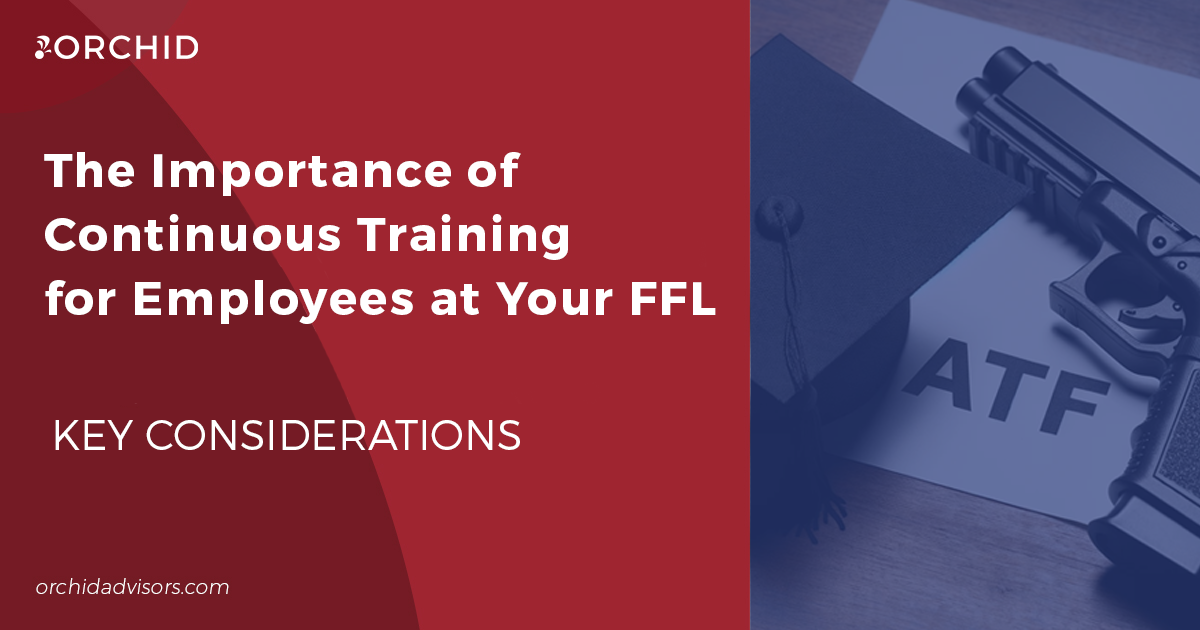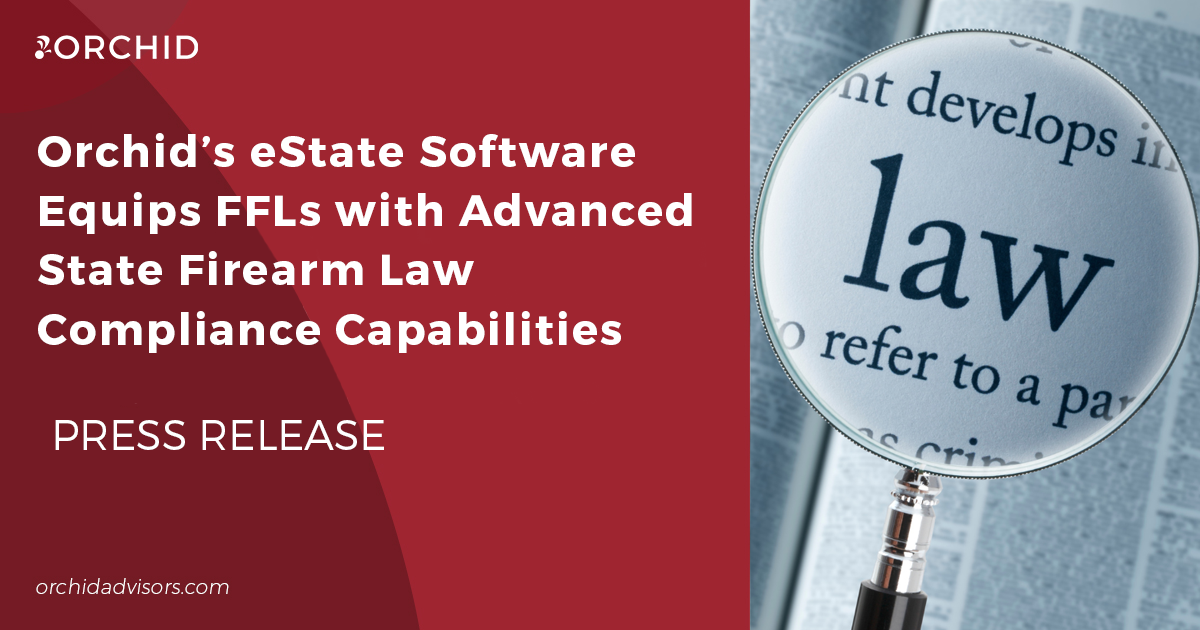 (Download)
Recognizing the NFA Firearm
16 – 18 – 26 – Go!
Nope, we’re not strategizing play calls in the off-season. We’re sharing our quasi-pneumonic for spotting NFA firearms and devices. If you’re an importer, dealer, collector, or gunsmith, having this basic phrase in mind should help you spot those items that require specialized handling beyond the routine stream of ATF commerce.
What is an “NFA firearm or device?” One defined by the National Firearms Act and its subsequent amendments. It’s a simple answer for a not-so-simple system. What started in 1934 as a stamp tax morphed into a national registry with special paperwork and background requirements to buy, sell, transfer, or even relocate such an item. Think of it as “ATF compliance” governing all FFL transactions, and then a subcategory of “NFA compliance” added to NFA transactions.
With that level of seriousness surrounding the NFA firearm or device, let’s take a moment to characterize eight categories of firearms, accessories, and destructive devices. Take note, these are abbreviated definitions and the actual regulations should be consulted. You can find the full-length definitions at 26 U.S.C. §5845. There are associated regulatory rulings to this provision that even include instructions on how to measure firearms to ascertain length.
(1) a rifle with a barrel less than 16 inches long;
(2) a shotgun with a barrel less than 18-inches long;
(3) & (4) a shotgun or a rifle with an overall length of less than 26 inches;
(5) a fully automatic firearm;
(6) a silencer;
(7) any “other” weapon that is rare, unique, or atypical, such as a cane gun, pen gun, or umbrella gun; and,
(8) a destructive device
While the language of these eight categories of NFA weapons would appear obvious, the specific statutory language is technical, and it is important to read the specific definitions. For example, it’s not just that an operative machine gun classifies as an NFA firearm, so, too, does “…the frame or receiver of any such weapon, any part designed and intended solely and exclusively, or combination of parts designed and intended, for use in converting a weapon into a machinegun, and any combination of parts from which a machine gun can be assembled if such parts are in the possession or under the control of a person.” This statutory language would mean that an autosear conversion kit designed to modulate a semi-automatic firearm into a fully automatic firearm would be regulated by the NFA.
What are some thoughts to convert these definitions into practical applications for your business?
First, grab a copy of the ATF “National Firearms Act Handbook.” It’s free. It’s a download. It’s comprehensive. Before attempting to or engaging in commerce with NFA firearms, at least walk through the table of contents and add up what you know and what you don’t know. This is a topic requiring you to have a fairly high command of information. Else, you can quickly find yourself on the wrong side of the law.
Second, identify all required registrations and taxes that will be required by the ATF and the U.S. Department of State to engage in commerce with NFA weapons. Do you want to manufacture an NFA firearm? Do you want to import or export NFA firearms? Do you want to collect a nonserviceable NFA firearm? Carefully understanding the specific commercial transactions in which you want to engage will steer you to the right federal agencies, forms, permits, taxes, and filings.
Third, know how to spot an NFA weapon. Before you nail a crate shut for shipment from overseas into the States, are you relying solely on third party information or do you have a reasonable skill set that will allow you to make at least a preliminary, independent assessment. ATF materials include photographic depictions of NFA weapons to boost your visual identification skills.
What else should you be aware of?
Just as there are signs for speed bumps on roads, be alert for fast and unforecasted shifts in the treatment of NFA weapons. The President has, at his disposal, the unilateral power of the “Executive Order,” meaning he can sign a statement that receives the treatment as a law. Also, we now have precedent in four states for rapid enactment of sweeping gun legislation.
If you are going to handle NFA weapons, you need to be turned into the potential for rapid change directly associated with NFA weapons or with state bans, and be prepared to redirect inventory by land, sea, or air on a moment’s notice.
References
(Download)
Recognizing the NFA Firearm
16 – 18 – 26 – Go!
Nope, we’re not strategizing play calls in the off-season. We’re sharing our quasi-pneumonic for spotting NFA firearms and devices. If you’re an importer, dealer, collector, or gunsmith, having this basic phrase in mind should help you spot those items that require specialized handling beyond the routine stream of ATF commerce.
What is an “NFA firearm or device?” One defined by the National Firearms Act and its subsequent amendments. It’s a simple answer for a not-so-simple system. What started in 1934 as a stamp tax morphed into a national registry with special paperwork and background requirements to buy, sell, transfer, or even relocate such an item. Think of it as “ATF compliance” governing all FFL transactions, and then a subcategory of “NFA compliance” added to NFA transactions.
With that level of seriousness surrounding the NFA firearm or device, let’s take a moment to characterize eight categories of firearms, accessories, and destructive devices. Take note, these are abbreviated definitions and the actual regulations should be consulted. You can find the full-length definitions at 26 U.S.C. §5845. There are associated regulatory rulings to this provision that even include instructions on how to measure firearms to ascertain length.
(1) a rifle with a barrel less than 16 inches long;
(2) a shotgun with a barrel less than 18-inches long;
(3) & (4) a shotgun or a rifle with an overall length of less than 26 inches;
(5) a fully automatic firearm;
(6) a silencer;
(7) any “other” weapon that is rare, unique, or atypical, such as a cane gun, pen gun, or umbrella gun; and,
(8) a destructive device
While the language of these eight categories of NFA weapons would appear obvious, the specific statutory language is technical, and it is important to read the specific definitions. For example, it’s not just that an operative machine gun classifies as an NFA firearm, so, too, does “…the frame or receiver of any such weapon, any part designed and intended solely and exclusively, or combination of parts designed and intended, for use in converting a weapon into a machinegun, and any combination of parts from which a machine gun can be assembled if such parts are in the possession or under the control of a person.” This statutory language would mean that an autosear conversion kit designed to modulate a semi-automatic firearm into a fully automatic firearm would be regulated by the NFA.
What are some thoughts to convert these definitions into practical applications for your business?
First, grab a copy of the ATF “National Firearms Act Handbook.” It’s free. It’s a download. It’s comprehensive. Before attempting to or engaging in commerce with NFA firearms, at least walk through the table of contents and add up what you know and what you don’t know. This is a topic requiring you to have a fairly high command of information. Else, you can quickly find yourself on the wrong side of the law.
Second, identify all required registrations and taxes that will be required by the ATF and the U.S. Department of State to engage in commerce with NFA weapons. Do you want to manufacture an NFA firearm? Do you want to import or export NFA firearms? Do you want to collect a nonserviceable NFA firearm? Carefully understanding the specific commercial transactions in which you want to engage will steer you to the right federal agencies, forms, permits, taxes, and filings.
Third, know how to spot an NFA weapon. Before you nail a crate shut for shipment from overseas into the States, are you relying solely on third party information or do you have a reasonable skill set that will allow you to make at least a preliminary, independent assessment. ATF materials include photographic depictions of NFA weapons to boost your visual identification skills.
What else should you be aware of?
Just as there are signs for speed bumps on roads, be alert for fast and unforecasted shifts in the treatment of NFA weapons. The President has, at his disposal, the unilateral power of the “Executive Order,” meaning he can sign a statement that receives the treatment as a law. Also, we now have precedent in four states for rapid enactment of sweeping gun legislation.
If you are going to handle NFA weapons, you need to be turned into the potential for rapid change directly associated with NFA weapons or with state bans, and be prepared to redirect inventory by land, sea, or air on a moment’s notice.
References
The ATF Changes Definition of “Engaged in the Business”
The final version of ATF Rule 2022R-17 has been submitted to the Federal Register and will go into effect 30 days after the date...






0 Comments